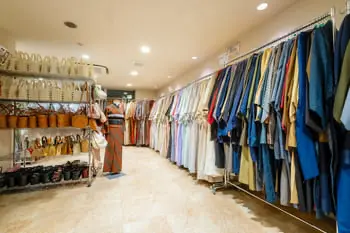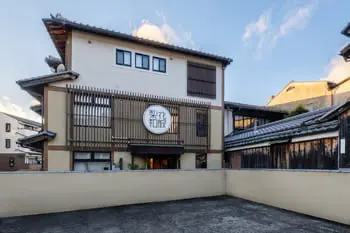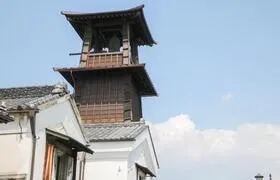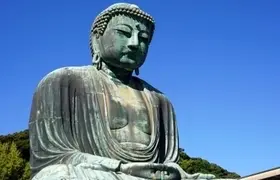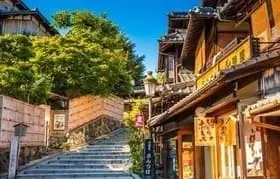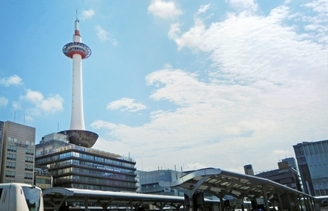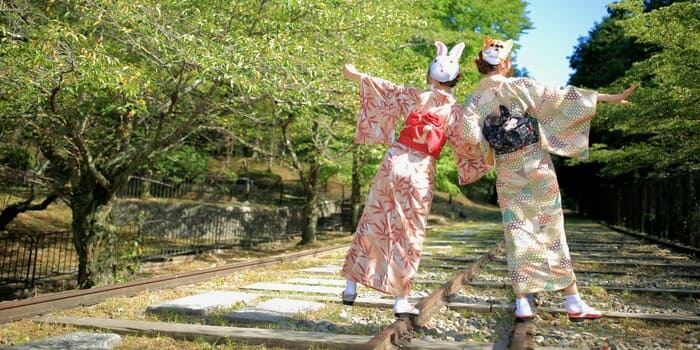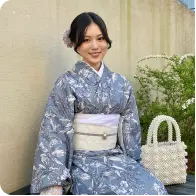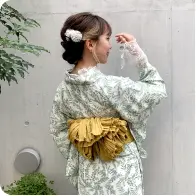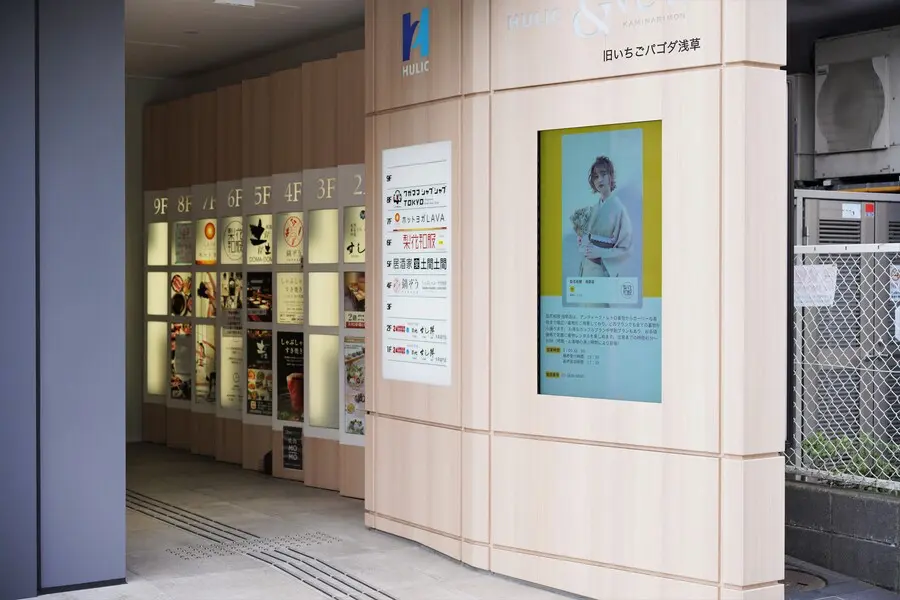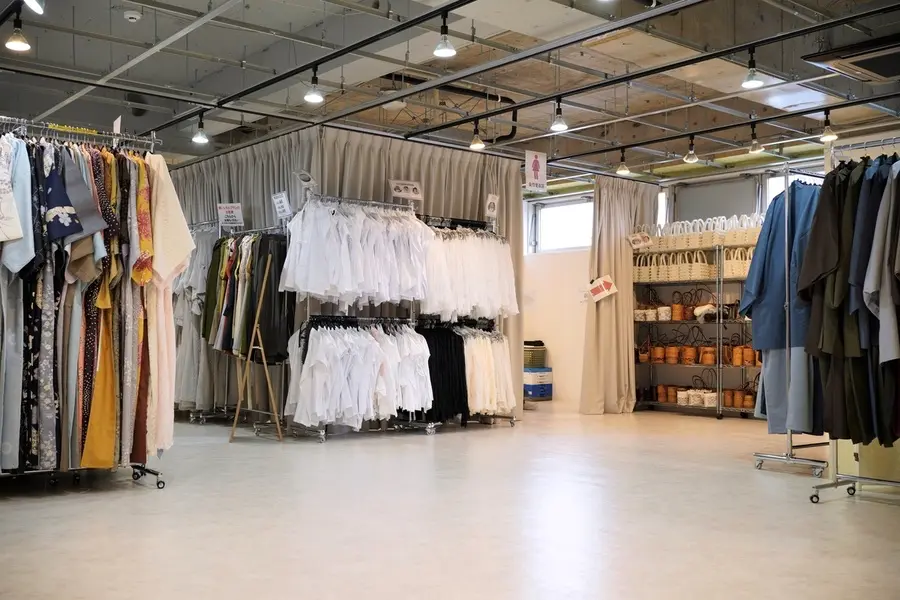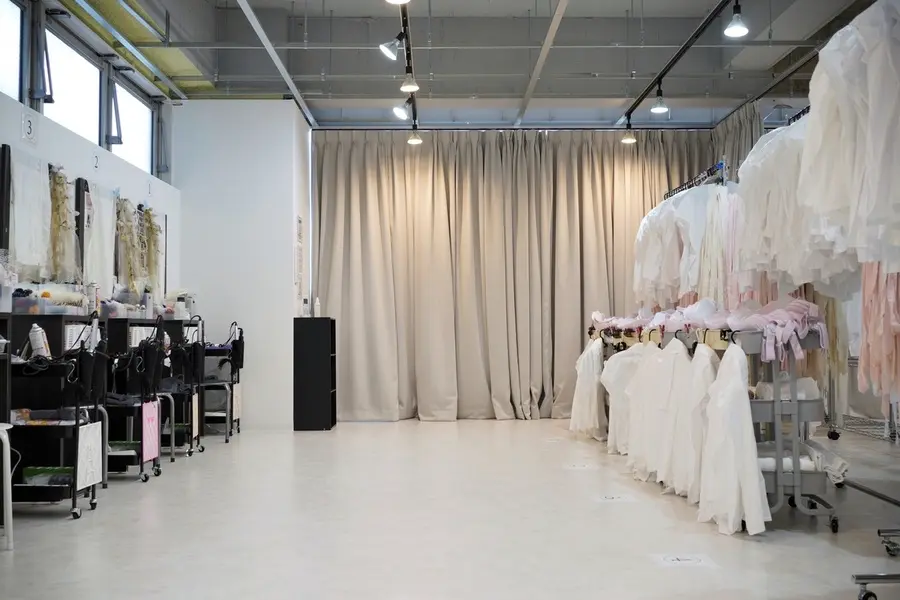Introducing Points of Asakusa Kimono Rental
Outline
Getting to Know Kimono Rental in Asakusa
Area of Kimono Rental Shops
Which station to get off at: It's better to get off at Asakusa Station on the Ginza Line or Toei Asakusa Line.
Kimono rental shops in Asakusa are concentrated around Asakusa Station on the Ginza Line. There is another station with a similar name, "Asakusa-bashi Station," but it is quite far from Asakusa, so please be careful. It's not a convenient walk from Asakusa-bashi Station to the Asakusa area. Additionally, around Asakusa Station on the Tsukuba Express, there are not many kimono rental shops, and it has become a shopping area for locals, so it's a bit inconvenient to go to kimono rental shops.
* Kimono rental shops typically require you to return the kimono by the specified return time, regardless of when you depart.
About the Fees
Kimono Dressing/Baggage Storage/Kimono/Kimono Underwear/Obi/Sandals/Tabi/Drawstring Bag
In most cases, a complete set of items required for kimono rental is included in the package. In Asakusa's kimono rental shops, when choosing a cute kimono, many shops charge additional fees for upgrading. If you make a reservation without the optional hair set, you will need to set your hair by yourself. Additionally, apart from the basic fee, options such as kimono upgrades, hair sets, hair accessories, lace accessories, and suitcase storage are commonly available. If you have a suitcase, most shops will store it for a fee, which is similar to using a coin locker.
* Many rental shops charge for storing large luggage. Price range: 500 yen to 700 yen.
Places to Sightsee After Wearing Kimono
Almost 100% of customers head to "The Asakusa" area, which includes Asakusa Temple, Kaminarimon Gate, Nakamise, and other famous spots. This area is a must-visit. However, sometimes customers find themselves with extra time after touring these places. In such cases, many head to gourmet areas like cafes or tapioca shops. If you have the energy, some people even go to the Skytree area!
Price
Types and Price Ranges of Kimono Rental in Asakusa
The rental fee for kimonos is around 2,000 yen.
Features and Prices of Kimono Rental Shops for Japanese Customers
How to Identify: Stylish Website
2,000 yen - 3,000 yen
There are many stylish and fashionable kimonos to choose from.
In Asakusa, there are many shops where you can rent kimonos starting from around 2,000 yen. There is a trend that as the price becomes cheaper, the variety of kimonos available for selection tends to decrease. You should be cautious because you may end up paying a higher amount than the initial reservation price if you choose a cute kimono or add other cute options. At Rikawafuku Rental Asakusa, you can choose from all kimonos with any plan.
Features and Prices of Kimono Rental Shops for Chinese Tourists
How to Identify: Unfashionable Website/Relatively Inexpensive
2,000 yen - 4,000 yen
Many of these shops do not have a website, or their websites are not stylish. Be cautious if a shop only accepts reservations through Instagram. There are cases where shops may seem fashionable at first glance, but the actual experience may be mediocre, and there is often a lot of marketing, so please be careful. The kimonos are usually bold and flashy, and they cater to customers from China. If you like flashy kimonos, this option may be recommended because of the balance between cost and pattern.
Features and Prices of Budget Kimono Rental Shops
How to Identify: Emphasis on Affordability
1,500 yen - 3,000 yen
This option is recommended for those who prioritize affordability. The variety of kimonos available for selection is limited, and there may be mixed reviews on the hair set provided. However, if you are looking to save money and can set your hair by yourself, this option may be suitable. It's better to check in advance which kimonos are available in cases where plans have limitations on the selection of kimonos. There are shops where you can rent a kimono for around 1,500 yen, so it's reassuring!
Please Be Aware of Shops with Additional Fees for Cute Kimonos
Check for Additional Charges for Kimonos
With budget kimono rental shops, there is a case where kimonos with cute designs have an additional fee. Be careful when making a reservation for plans that have limitations on the selection of kimonos. If you don't mind which kimono you wear and just want an affordable option, there are shops where you can rent kimonos for around 1,500 yen, so you can rent kimonos without worries!
Season
Seasonal Asakusa Kimono Rental Features
- Spring
- Summer
- Autumn
- Winter
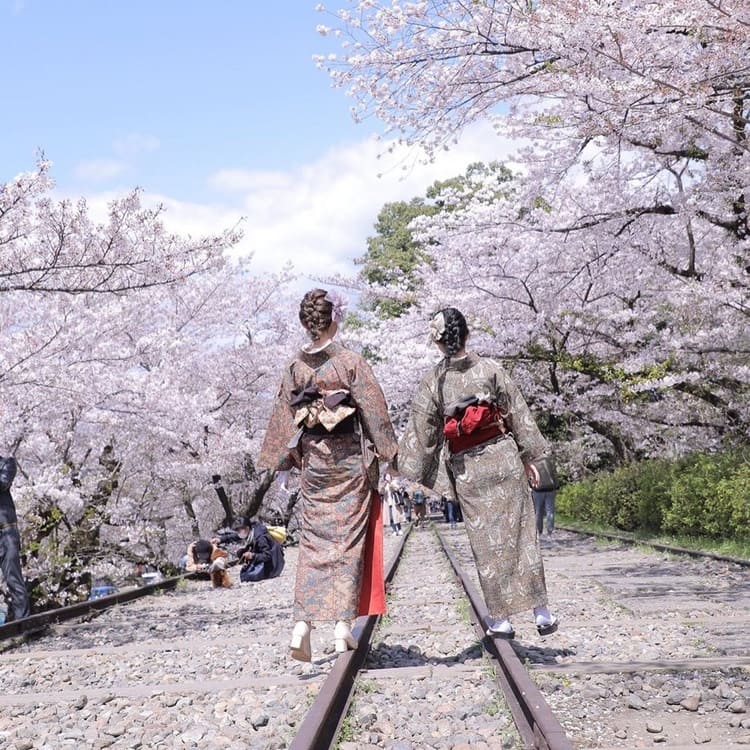
Kimono Rental in Spring in Asakusa
Crowd Level at Kimono Rental Shops
★★★★★
From mid-March to late March, it's the busiest season for kimono rental shops. Asakusa shops tend to be crowded during this season, so it's recommended to make reservations well in advance!
Timing for Reservations
For this season, you should make reservations at least one week in advance, preferably earlier.
Features of Spring in Asakusa
Spring in Asakusa sees a convergence of overseas tourists, university students, high school students on graduation trips, and cherry blossom viewing season. Restaurants and rickshaw rides should be reserved in advance for a smoother experience.
What to Bring for Spring Kimono Rental
Photography items: Selfie stick, mobile charger. Others: Sunscreen. Since outdoor photography is common during the cherry blossom season, items for selfies are essential. A portable charger is handy to avoid running out of battery. Due to strong sunlight, sunscreen may also be useful.
Spring Gourmet in Asakusa
Street food: Try Janbo Melonpan, a new Asakusa classic, well-known at Hangetsudo!
Indoor dining: Visit Goncha Asakusa, a popular tapioca shop. The Asakusa branch is relatively less crowded and has ample seating, making it ideal for a quick break!
Spring Events in Asakusa
From late March, cherry blossoms begin to bloom, making it the perfect season for sightseeing. The cherry blossoms along the Sumida River are a magnificent sight.
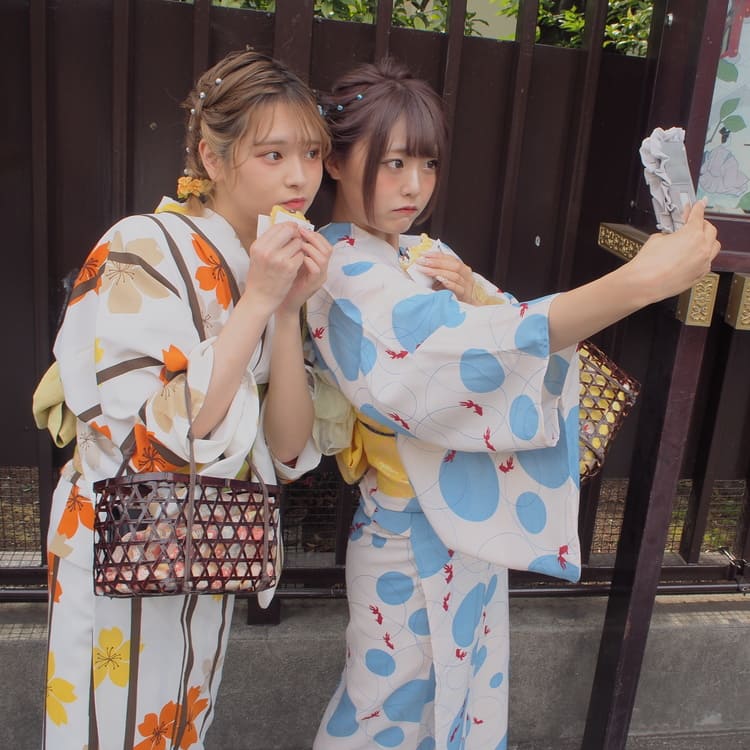
Yukata Rental in Summer in Asakusa
Crowd Level at Yukata Rental Shops
★★☆☆☆
During the summer season, yukata rental shops are relatively empty. However, be cautious on days with events like fireworks festivals, as they can get extremely crowded.
Timing for Reservations
Except for popular shops, reservations made the day before are usually not a problem.
Features of Summer in Asakusa
Summer in Asakusa features numerous events such as the Sumida River Fireworks Festival and the Ho-zuki Market.
What to Bring for Summer Yukata Rental
Heat relief items: Hand fan, portable fan, parasol. Others: Insect repellent, sunscreen, band-aids. First and foremost, prioritize heat relief. Items like hand fans and portable fans are essential. Insect repellent and sunscreen are also must-have items. Don't forget band-aids in case of blisters when wearing geta (wooden sandals) with bare feet!
Summer Gourmet in Asakusa
Street food: Matcha gelato, which allows you to enjoy both the hot summer and unique Asakusa matcha flavor!
Indoor dining: Visit Fruit Parlor Goto, a café where you can savor seasonal fruits. It's perfect for a date, and it's conveniently located near the station!
Summer Events in Asakusa
The Sumida River Fireworks Festival is the largest event during this season. There are also other events like the Samba Carnival and lantern floating, making it a season full of exciting happenings!
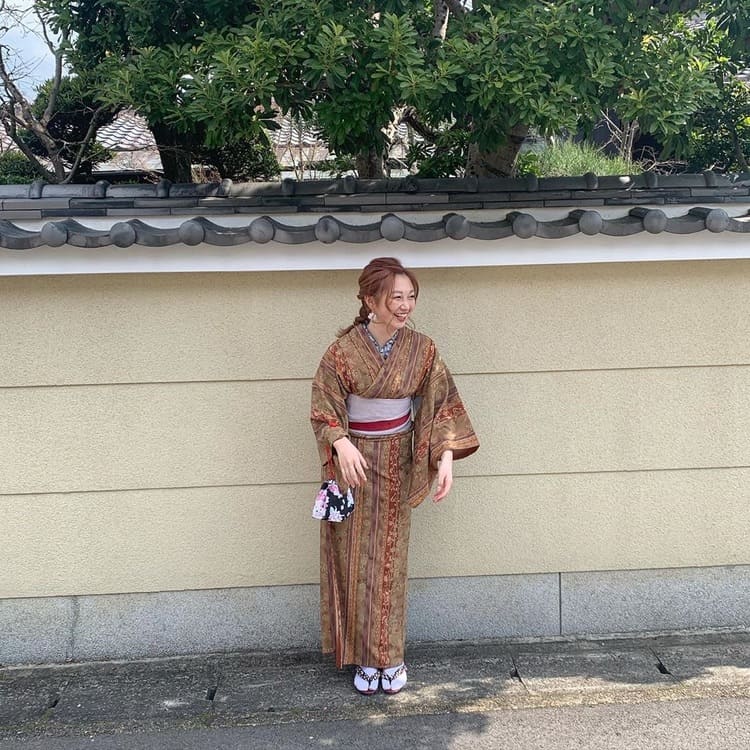
Kimono Rental in Autumn in Asakusa
Crowd Level at Kimono Rental Shops
★★★★☆
From the second week of November to the first week of December, it's the autumn foliage season, but it's not too crowded. Other times of the year tend to be less busy.
Timing for Reservations
Except for weekends during the autumn foliage season, making a reservation the day before is usually sufficient.
Features of Autumn in Asakusa
You can see beautiful autumn foliage at Sumida Park and near Asakusa Temple, including maple and ginkgo trees. It's a relatively less crowded time, making it surprisingly recommended for sightseeing!
What to Bring for Kimono Rental in Autumn
Eating on the go: Consider makeup touch-up items. Asakusa offers a variety of autumn gourmet experiences, so carrying some makeup touch-up tools can be useful.
Autumn Gourmet in Asakusa
Street food: Try Asakusa Menchi, a classic local menu. Eating it fresh is a must for the best experience!
Indoor dining: Visit Funawa Cafe for famous sweet potato treats and parfaits. The cafe offers indoor seating, making it a great choice!
Autumn Events in Asakusa
Starting from November, various events related to shrines and temples, such as Tori-no-Ichi Fair and Yanaka Festival, take place. It's the perfect time for historical exploration, and autumn foliage illumination also begins. Don't miss the opportunity to see the unique autumn foliage during this season.
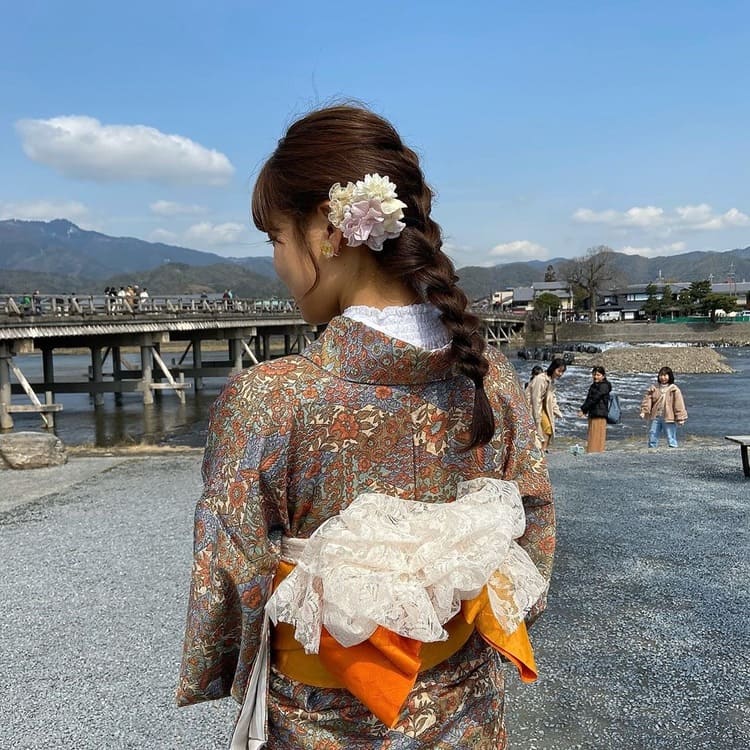
Kimono Rental in Winter in Asakusa
Crowd Level at Kimono Rental Shops
★★★☆☆
It gets crowded during the New Year's visit to shrines and from the third week of February, which is the start of the spring break for students.
Timing for Reservations
During the first week of January for New Year's visits, you should make a reservation at least a week in advance; otherwise, you may not get a booking. For other times, a few days in advance is often sufficient.
Features of Winter in Asakusa
The New Year's visit season is highly crowded with tourists from all over the Kanto region. Asakusa Temple, in particular, is one of the two major New Year's visit spots in Tokyo along with Meiji Shrine, so be cautious!
What to Bring for Kimono Rental in Winter
Prepare for the cold: Bring pocket warmers and a scarf. Pocket warmers, especially the type you can stick inside your obi (kimono sash), are essential. They not only provide warmth but also help prevent low-temperature burns. Don't forget to wear Heattech clothing for extra warmth!
Winter Gourmet in Asakusa
Street food: Try Agemanju, a warm and delightful sweet treat. It's perfect for a quick warm snack.
Indoor dining: Visit Tsumuguri Cafe, a historical cafe with a hearth. You can enjoy both delicious food and warmth in the cozy atmosphere!
Winter Events in Asakusa
Aside from New Year's Eve and New Year's visits, Asakusa Temple hosts Setsubun events, including bean-throwing ceremonies. Don't miss the opportunity to experience these unique cultural events.
Outline
Procedure and Time Required for Kimono Rental
Reservation
Crowd levels can vary depending on the time of year, so please be aware of that. During cherry blossom season, it's advisable to make reservations with about a week's advance notice.
Arrival
If you're arriving by car, be cautious about parking and potential traffic delays, as they can cause delays. Asakusa Station to Asakusa Temple is within walking distance, while taking a taxi is recommended for reaching the Skytree.
Choosing a Rental Kimono (10 minutes~)
Selecting a rental kimono can be a fun experience. Check if the rental shop you reserved with has any restrictions on kimono choices based on their plans. Lately, in Kyoto, kimono in subtle and petite colors have become popular.
Dressing (15 minutes~20 minutes)
The dressing process usually takes around 15 minutes. Often, the most time-consuming part is selecting the items you want to bring with you. You can find more details about recommended items to bring in our blog, so feel free to check it out!
Hair Set (15 minutes~20 minutes)
It takes about 15 to 20 minutes for the hair set. The available hairstyles may vary from one shop to another, but generally, an updo hairstyle complements the kimono beautifully.
Departure
It's time to depart after leaving your regular clothing and belongings at the shop! Many shops set their return times for the evening, so be sure to check the return time diligently!
Return
Many shops charge additional fees if you return the kimono late, so be attentive. Asakusa has many shops that are a bit far from the station, so be sure to leave with ample time if you've traveled a long distance!
Asakusa store rental plan list and prices
FAQ
Frequently Asked Questions and Kimono Rental Tips
What should I be aware of when eating in a kimono?
In the vicinity of Asakusa, there are plenty of gourmet options for street food like melon bread or menchi katsu. Be cautious about spills that might stain your kimono or accidentally staining it while doing makeup touch-ups. Also, be aware that Asakusa's specialty dish, monjayaki, may lead to oil odors clinging to your kimono, so exercise caution.
How should I walk when wearing a kimono for rental?
Walk with your feet closer together and take smaller steps than usual. You'll be wearing unfamiliar zori sandals, so be careful not to trip. For more tips on avoiding mishaps, check out this checklist for trouble-free kimono rental in Kyoto.
Are there time restrictions for kimono rental?
Most kimono rental shops, regardless of the time you start renting, operate on a daily rental basis. You must return the kimono by the designated return time for the day.
Is there a makeup service available?
Except for maiko experiences, most kimono rental shops do not provide makeup services. Customers are expected to do their makeup themselves before visiting the kimono rental shop.
Are there any essentials for kimono rental during winter in Kyoto?
Winter in Kyoto can be chilly, so it's recommended to bring items like scarves and pocket warmers. For more details, you can check out the following article: 10 things to be mindful of when wearing kimono for sightseeing in Kyoto.
Are there recommended places for sightseeing after renting a kimono in Kyoto?
Recommended tourist spots vary depending on the rental area. For more information, please check out the following article: 10 recommended sightseeing routes after renting kimono in Kyoto!.
Is kimono rental available on rainy days?
Yes, kimono rental is possible on rainy days. For more details, please check out the following article.
Can foreigners who come to Kyoto for travel rent kimonos?
Yes, it is possible. Since Kyoto receives many foreign tourists, most kimono rental shops have English-speaking staff. For guidance on how to assist foreign visitors with kimono rental, please check out this article: 10 points to consider when guiding foreigners for kimono rental in Kyoto.
Is kimono rental only for a day, or are there short-term rental options?
Some kimono rental shops offer rental periods as short as 2 hours or discounted afternoon rates, so you may find options depending on the rental shop and time of day. Please check with each kimono rental shop for availability.
Up to what height is kimono rental possible?
Many kimono rental shops in Kyoto offer larger sizes to accommodate taller customers, including foreign visitors. For specific details, please check with each kimono rental shop. As a general guide, rental is often possible for women up to 175cm and men up to 195cm. For larger sizes, you can explore options at Rikawafuku, your choice for larger-size kimono and yukata rental in Kyoto!.
I'm menstruating. Can I still use kimono rental services?
Yes, you can. If you're concerned about potential damage to the kimono, it's a good idea to review the usage regulations of each kimono rental shop. At Rikawafuku, we offer kimono insurance for your convenience. Learn more at Troubleshooting when renting a kimono in Kyoto.
Kimono Rental Rikawafuku
Information for Tokyo Asakusa Store
- Shop Introduction
-
-
- Address
-
〒111-0034
Tokyo, Taito Ward, Kaminarimon 2-16-9 HULIC & New Kaminarimon 6F> Click here for detailed access
- Access by Train
-
- Tokyo Metro Ginza Line, Asakusa Station, 3 min on foot
- Toei Asakusa Line, Asakusa Station, 3 min on foot
- Tobu Skytree Line, Asakusa Station, 5 min on foot
- Nearby Tourist Attractions
-
- Kaminarimon Gate: 1-minute walk
- Senso-ji Temple: 3-minute walk
- Nakamise Shopping Street: 3-minute walk
- Opening Hours
-
- 9:00 AM – 6:00 PM
- Last dressing reception: 4:00 PM
- Last return time: 5:30 PM
- Closed Days
- ※Open all year round. Information about closures due to weather conditions such as typhoons will be posted on our website.
- Phone Number
- 050-3204-4859
Same-day phone reservations are also possible.
- [email protected]
- @rikawafuku
- Shop Introduction Video
-
- Affiliated Rikawafuku Stores Nearby
-
- Foreign language page
- Rikawafuku Top Page
- Affiliated Organizations
- Asakusa Tourism Federation
Tokyo Asakusa Kimono Rental Plans
- Asakusa Kimono Basic Plan
- Asakusa Kimono Hairset Plan
- Asakusa Kimono Student Discount Plan
- Asakusa Kimono Couple Plan
- Asakusa Silk Furisode Rental Hairset Plan
- Asakusa Homongi Hairset Plan
- Asakusa Kimono Men's Plan
- Asakusa Kimono Men's Hakama Plan
- Asakusa Hakama and Hairset Plan
- Kimono rental Children Plan
- Kimono rental Family Plan
- Asakusa Lace Kimono Rental Plan
- Asakusa Retro Kimono Rental Plan
- Kimono Rental Group Plan
Store Information
Asakusa Store Information
Affiliated Stores

